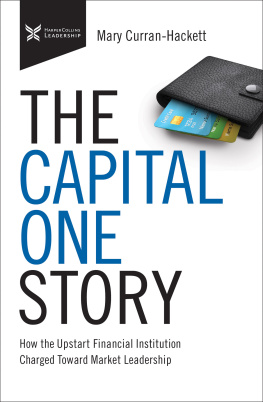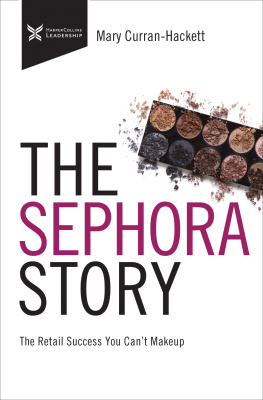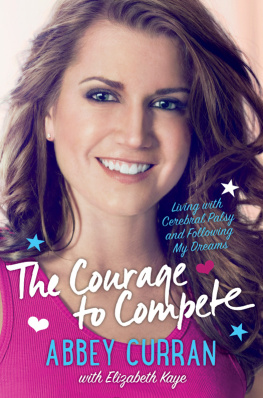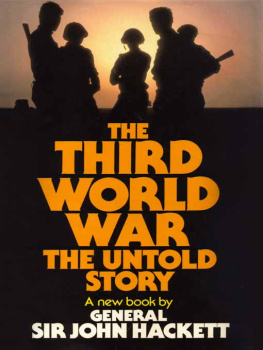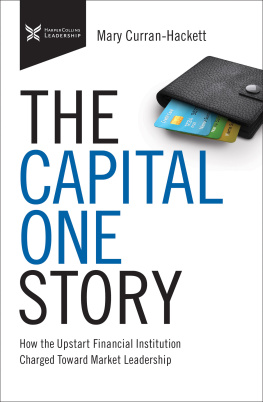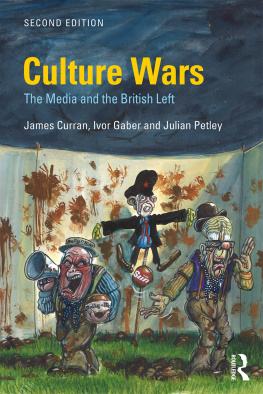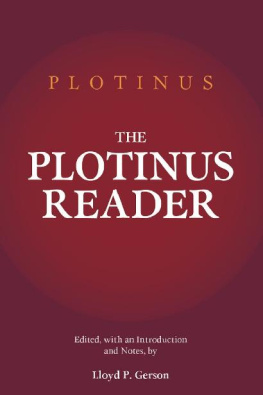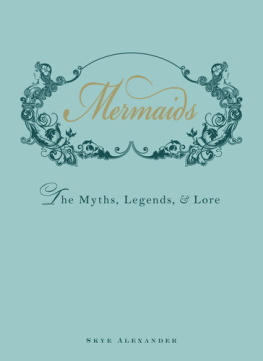Mary Curran Hackett - The Capital One Story
Here you can read online Mary Curran Hackett - The Capital One Story full text of the book (entire story) in english for free. Download pdf and epub, get meaning, cover and reviews about this ebook. year: 2020, publisher: Harpercollins Leadership, genre: Business. Description of the work, (preface) as well as reviews are available. Best literature library LitArk.com created for fans of good reading and offers a wide selection of genres:
Romance novel
Science fiction
Adventure
Detective
Science
History
Home and family
Prose
Art
Politics
Computer
Non-fiction
Religion
Business
Children
Humor
Choose a favorite category and find really read worthwhile books. Enjoy immersion in the world of imagination, feel the emotions of the characters or learn something new for yourself, make an fascinating discovery.
- Book:The Capital One Story
- Author:
- Publisher:Harpercollins Leadership
- Genre:
- Year:2020
- Rating:5 / 5
- Favourites:Add to favourites
- Your mark:
- 100
- 1
- 2
- 3
- 4
- 5
The Capital One Story: summary, description and annotation
We offer to read an annotation, description, summary or preface (depends on what the author of the book "The Capital One Story" wrote himself). If you haven't found the necessary information about the book — write in the comments, we will try to find it.
The Capital One Story — read online for free the complete book (whole text) full work
Below is the text of the book, divided by pages. System saving the place of the last page read, allows you to conveniently read the book "The Capital One Story" online for free, without having to search again every time where you left off. Put a bookmark, and you can go to the page where you finished reading at any time.
Font size:
Interval:
Bookmark:
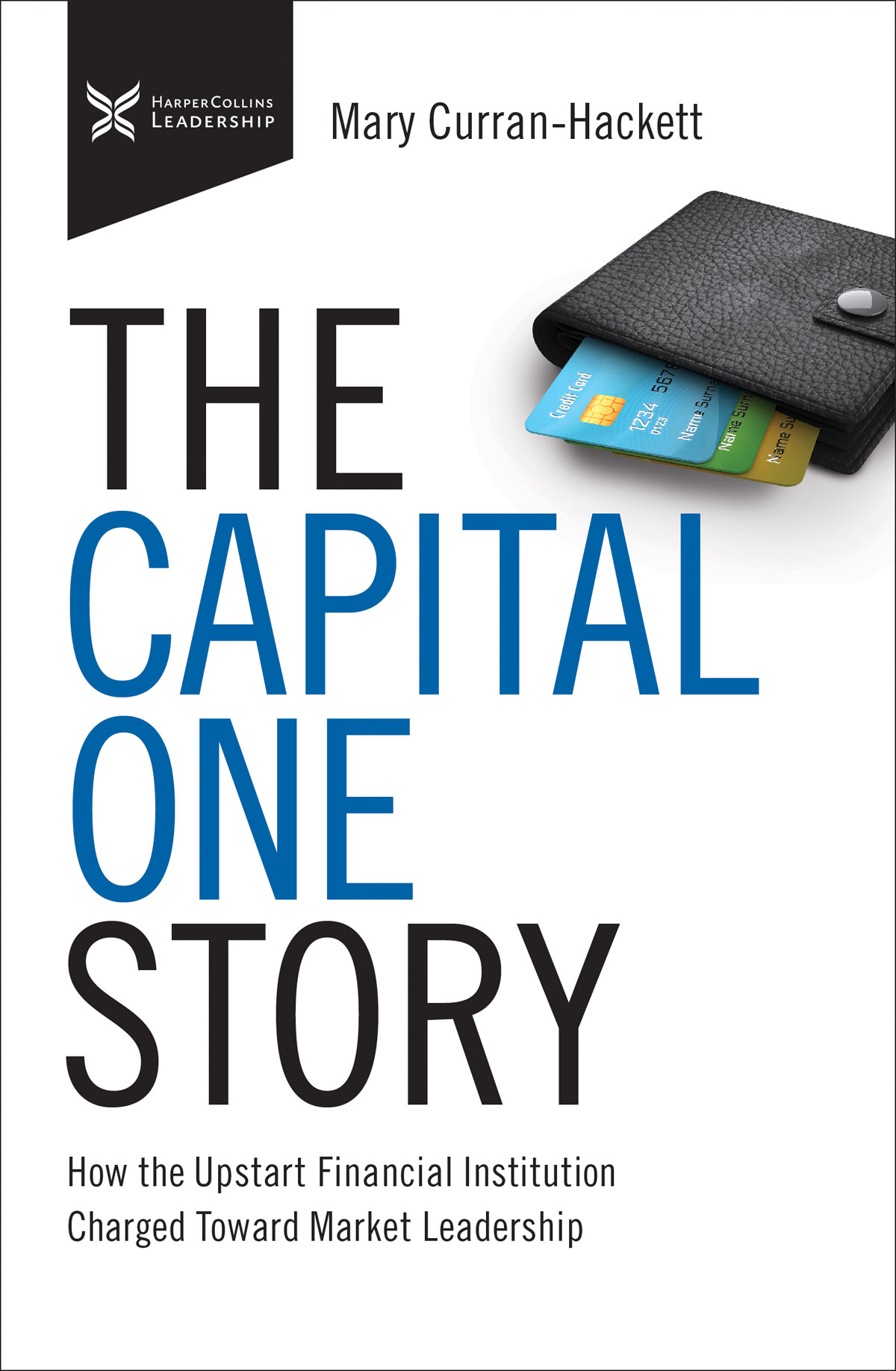
2020 HarperCollins Leadership
All rights reserved. No portion of this book may be reproduced, stored in a retrieval system, or transmitted in any form or by any meanselectronic, mechanical, photocopy, recording, scanning, or otherexcept for brief quotations in critical reviews or articles, without the prior written permission of the publisher.
Published by HarperCollins Leadership, an imprint of HarperCollins Focus LLC.
Published in association with Kevin Anderson & Associates:
https://www.ka-writing.com/.
Book design by Aubrey Khan, Neuwirth & Associates.
ISBN 978-1-4002-1872-1 (eBook)
ISBN 978-1-4002-1871-4 (HC)
Epub Edition March 2020 9781400218721
Library of Congress Control Number: 2020931342
Printed in the United States of America
20 21 22 23 LSC 10 9 8 7 6 5 4 3 2 1
Information about External Hyperlinks in this ebook
Please note that the endnotes in this ebook may contain hyperlinks to external websites as part of bibliographic citations. These hyperlinks have not been activated by the publisher, who cannot verify the accuracy of these links beyond the date of publication
CONTENTS
AUTHORS NOTE
Capital One declined all interviews and participation in this venture. All interviews and quotes come directly from online presentations, news articles, books, case studies, as well as Capital Ones website, annual reports, and press releases.
Credit cards arent bankingtheyre information.
RICHARD FAIRBANK,
Founder and CEO, Capital One
I ts impossible to go a day without seeing or hearing mention of Capital One. Their witty, star-studded commercials and print ads are ubiquitous. Though relatively new to the banking and credit industry compared to their historic competitors, they have been steadily growing and edging out the competition for the past twenty-five years. Theyre growing so much they are now one of the top 10 credit issuers, keeping company with some of the most enduring banks in US history. Capital One is not just enduring but historic and groundbreaking as well. Its hard to imagine that such a new company could have anything in common with the legacy banks, but in fact, they do.
A Very Brief History of US Banking and Lending
Some names are synonymous with bankingBNY Mellon and JPMorgan Chase for example. Some with history. Some are synonymous with both. Enjoying a resurge in popularity thanks in large part to the smash hit Hamilton, founding fathers Aaron Burr and Alexander Hamilton are some such names. Though the two are well-known frenemies and helped shape our nation, what is little known, however, is that the two rivals are also the founders of two of the largest and longest-enduring US banks. While we tend to think of Big Banks as something unique to our age, they have been part of the fabric of American life since its inception.
Its All About the Hamiltons
One of the USs oldest banks, The Bank of New York, was founded by none other than Alexander Hamilton himself in 1784. Upon his return from serving in Congress, Hamilton returned to New York and saw a business opportunitycredit. Merchants in the growing city needed access to credit in order to finance their new business ventures. However, there was one segment of the business population Hamilton refused to lend tohis enemies, the Jeffersonian Republicanswhich essentially amounted to half of the merchants in New York.
Enter Hamiltons long-time rival, Aaron Burr. Not to be outdone, Aaron Burr, who had been outspokenly anti-Federalist and anti-credit, in a bold (and some might even argue devious) move reworded some language in a charter that had been created to build a private water company for New Yorkers. In the newly worded charter, Burr made a provision that the water company could accept deposits and make loans. In essence the Manhattan Water Co. was a bankor what became known as the Manhattan Bank. Burr could now lend to his peers who had been shut out previously by Hamilton and his Federalist friends. With this new influx in money and access, the entire political and financial landscape changed in America.
Some historians, like Robert E. Wright, author of One Nation Under Debt: Hamilton, Jefferson, and the History of What We Owe, argues its the reason Jefferson was even elected president in 1800. With the new infusion of cash flow, he had access to otherwise inaccessible funds thanks to Burrs Manhattan Bank. Money playing a role in politics, it appears, is as old as America itself. Similarly, shutting people out of credit and discriminating against them (and finding ways to bypass discrimination) has been as well.
In fact, nine out of the ten largest banks in the US have been around for more than 100 years. They have survived forty-seven recessions, stock market crashes, an ensuing Depression, Democratic and Republican presidencies, a Civil War, two World Wars, countless other wars, mergers, acquisitions, and even Ponzi schemes.
Though the times have certainly changed, banking and the rivalries among banks have remained largely the same. Hamiltons Bank of New York still survives today, though it is known as New York Mellon (BNY having merged with Mellon in 2006). Similarly, Burrs Manhattan bank survives as JPMorgan Chase, (having first merged with Chase and then JPMorgan in 2000). To this day, our founding fathers banks, JPMorgan Chase and Mellon endure and are on the Top 10 list of largest banks in the US. stock market crashes, an ensuing Depression, Democratic and Republican presidencies, a Civil War, two World Wars, countless other wars, mergers, acquisitions, and even Ponzi schemes. These old banks and the leaders that founded them, have been, for better or for worse, part of the continuing unfolding American story.
Capital Ones Origin Story
Among these top ten largest US banks (by assets), however, one bank stands out precisely because it hasnt shared in this rich and complex past. Though it is only twenty-five years old, Capital One is no less a part of the ever unfolding American storyand more accuratelyits future. Its origin story, ironically, comes about for reasons very similar to why the two oldest and largest began in the first place: The consumers need for access to credit and the founders of the banks desire to bypass discrimination.
Capital One, though fairly new, is linked intrinsically to both American spirit and history. Its founders also share many striking similarities to US bankings early founders. Fairbank, like Burr, is American-born, and Morris, like Hamilton, is an immigrant. When they founded Capital One, the two were young visionaries who saw consumer needs changing and were ready to seize the opportunity. Like Burr, they saw that only half of all Americans at the time had access to credit and they sought to democratize the process. Like Hamilton, they wanted to bring America into a modern era, where it could both prosper and grow and meet the demands of a changing socioeconomic, political, and rapidly developing landscape. But, unlike Burr and Hamilton, the two wont be meeting in a duel on a field in New Jersey anytime soon. To this day, they remain friends and leaders and in the banking and FinTech (the area of where financial services and digital technology meet) industries. Unlike any other large bank on the Top Ten List, Capital Ones founder still sits in the CEO chair and commands the vision of the bank itself.
Capital One, though fairly new, is linked intrinsically to both American spirit and history.
Font size:
Interval:
Bookmark:
Similar books «The Capital One Story»
Look at similar books to The Capital One Story. We have selected literature similar in name and meaning in the hope of providing readers with more options to find new, interesting, not yet read works.
Discussion, reviews of the book The Capital One Story and just readers' own opinions. Leave your comments, write what you think about the work, its meaning or the main characters. Specify what exactly you liked and what you didn't like, and why you think so.

